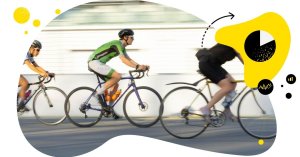Research and performance analysis is part of any effective marketing strategy. And looking into your competitors is an important part of that, too. Including on Instagram, if it’s an important channel for your brand – and your customers.
Here’s how to nail Instagram competitor analysis to make it actually helpful and easy to do at the same time.
- What is an Instagram competitor analysis?
- Why should you do an Instagram competitor analysis?
- Which Instagram competitive metrics are important?
- How to find your competitors on Instagram
- How to analyze competitors on Instagram with NapoleonCat
- You’ve got the data – now what?
- Instagram competitor analysis – FAQs
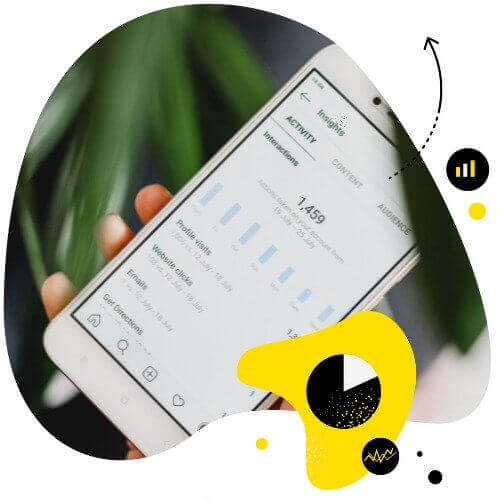
Instagram Competitor Analysis Tool
Track your competitors on Instagram. Compare multiple Instagram accounts side by side and generate in-depth reports – with an all-in-one social media tool.
What is an Instagram competitor analysis?
No business exists in a vacuum. Everyone has competitors – direct or indirect ones. (For example, did you know that one of Netflix’s biggest competitors is actually TikTok? They might not be in the same space, but they’re certainly appealing to the same audience, with TikTok occupying the time people would otherwise be spending watching Netflix.)
The key is NOT to follow what your competitors are doing or, worse, copy them. It’s to be aware they exist and find ways to differentiate your brand from others. You can’t do that if you don’t know what they’re doing and how.
This includes all the channels they’re on, including social media, that you can track and learn from. And that’s exactly what Instagram competitor analysis is for.
It lets you look at what your competitors are doing on Instagram and how their audience (which is most likely also your audience) responds to it. So you can get inspired to do (or not to do) some new things you haven’t tried that seem to work (or fail.)
In a nutshell (and I’ll expand on it in a bit), an Instagram competitor analysis is tracking:
- What your competitors post on Instagram, including formats and topics
- How often they do it, on what days, and at what times – and what’s most successful for them
- How they’re growing their audience
- And how their audience responds to their content, including comments, likes, and shares.
Why should you do an Instagram competitor analysis?
Ignoring your social media competitors is usually not a great idea, at least not in the long run. Sure, your product or service is unique and should probably sell itself, right?
Well, the thing is, even if you’re a pioneer in your field, sooner or later others will follow, and you *will* get competition. Simple as that (think about brands like Uber. They revolutionized rides, for sure. But also, they did compete with taxi companies in the first place. And they got competitors like Lyft soon enough.)
The more likely scenario is that you’re operating in a field that already has other businesses doing the same or similar thing. And people are overwhelmed with ads and brand content everywhere, including on Instagram, making it harder and harder for them to choose who to follow and eventually buy from. So you do need to stand out and be proactive to get through to them.
And to know how to do that, and keep getting better at it, you need to analyze your competitors on Instagram. Here are a few more reasons:
Instagram competitor analysis helps you establish your own KPIs
KPIs can be different across businesses. That’s why it’s good to have a wider perspective. And benchmarking your business against a successful company of comparable size and resources will help you set your own business goals on Instagram. (“Comparable” being the key word here – it’s not enough to look at big brands and how they do. You might really miss the mark.)
Benchmarking will help you determine how often to post, what kind of content people respond to best, and what’s the best time to post on Instagram to get the best results.
Instagram competitor analysis gives you ideas for content creation
It’s really hard to come up with something super original these days – not to mention go viral, the expectations of so many CEOs out there. It’s like everything has been said already, and the amount of content is just flooding people’s Instagram feeds and Stories.
To combat this, you need a strategy. And to have a strategy, you need to know what works for your audience and what doesn’t. And an important part of figuring that out is doing an Instagram competitor analysis. It’ll give you more data than your gut – or at least, it can complement it.
Neal Taparia, the founder of Hearts.land, advises: “If you notice anything peculiar, don’t copy it – take notes and try to apply similar techniques to your own top-notch Instagram content strategy.” Which is a great way to put what Instagram competitor analysis is really for.
Analyzing competitors’ Instagram accounts is simply cost-effective
Now that’s an important benefit. 🙂 Instagram competitor analysis takes time and effort, which is exactly why companies often outsource it to agencies, and for an agency price (and you and I both know it ain’t gonna be cheap.)
But whether you run a B2B company or an eCommerce store, you can try and do it yourself. I don’t recommend doing it manually, though – this could take you days or even weeks. You can find a social media analytics tool that helps gather and process that data for you – and even present it in a visually attractive report. Just like NapoleonCat does.
And I’ll show you how to use it to analyze your competitors’ performance on Instagram a little bit later in this article.
Which Instagram competitive metrics are important?
First of all, which metrics will be key for your business depends on your strategic goals – whether you’re at a point where the key is to grow your audience and reach or focus on engagement only. But there are some commonly important metrics you should keep an eye on. 👀
1. Posting frequency
This won’t tell you much in isolation, but when you look at more metrics – like engagement – you’ll be able to get a feel of your competitors’ social media strategies and figure out ways to level up yours.
You can check that easily in NapoleonCat, without actually following your competitors on Instagram daily and counting the content pieces they put out.

2. Followers and follower growth
The number of followers can be a vanity metric – and it won’t really tell you about how engaged they are. But looking at it and more specifically, at follower growth, will give you a hint about how actively your competitors are working on their reach. Maybe they run a lot of Instagram ads focused on getting new followers or organizing giveaways or contests that consistently bring them new followers.
This will require a deeper look into it, but follower growth is a good benchmark to see what’s possible. Don’t forget, a huge following is not synonymous with engaged and loyal audience. That’s why you shouldn’t analyze it in isolation.
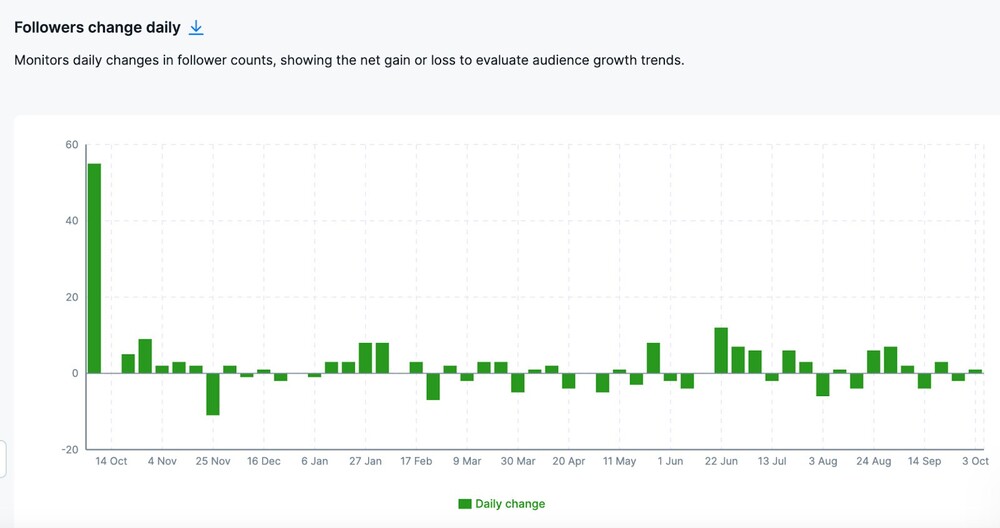
3. Engagement
Engagement is a super important piece of the Instagram puzzle – because engagement is what actually helps build your brand (and lead to sales, the ultimate metric in the end.)
There are different types of engagement on Instagram – including likes, comments, and shares. And in total, compared against your follower base, they make up your Instagram engagement rate. It tells you about how well your content resonates with your followers and is an important indicator of the effectiveness of your content strategy overall.
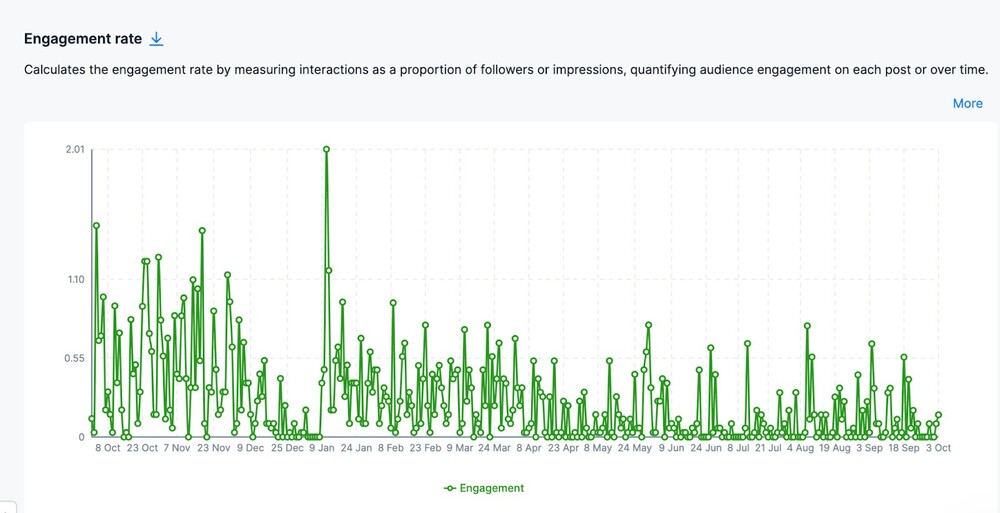
4. Posting times
To get more reach and engagement, it’s important to track the type of content that resonates with them, the topics, but also the posting times. Because you can have great content, but if it misses the slot when your followers (and audience in general) are most active on the platform, it may go unnoticed. And you’ll see it both in the views and the engagement.
In NapoleonCat you can check both the best days to post your content and the best times, so you can adjust your posting schedule to when your followers (and your competitors’ followers) usually engage with posts and Stories.
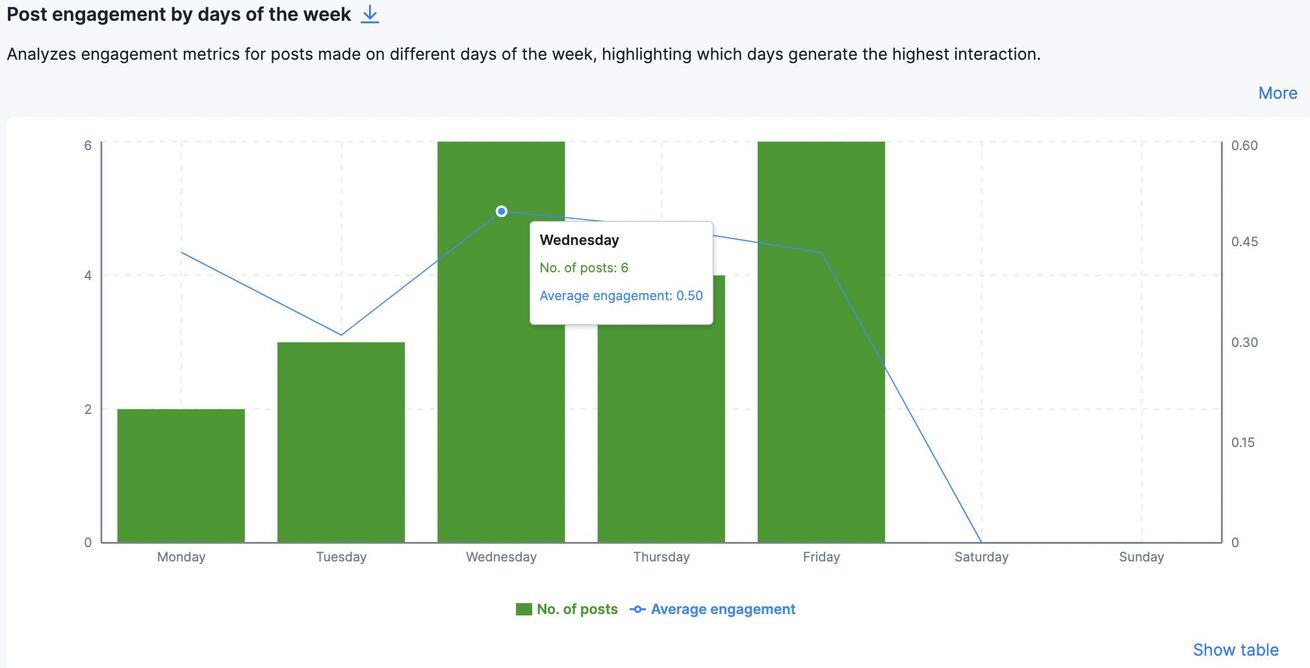
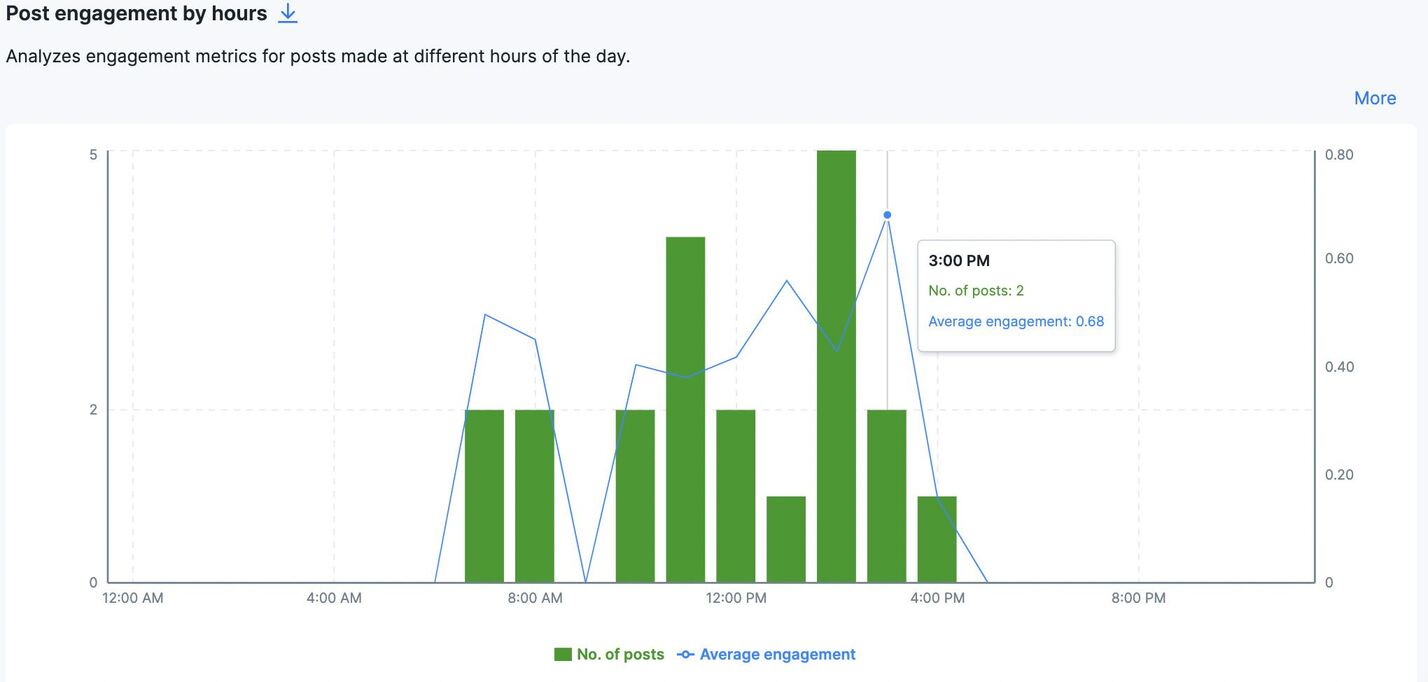
5. Top-performing content
Looking at your competitors’ posts according to the engagement they get is a great way to figure out what your audience might be interested in. And it’s really helpful when figuring out your own content strategy for Instagram. Again, not to copy, but to have a much better knowledge of what topics and formats work, so you can plan your own spin on it.

Instagram Competitor Analysis Tool
Track your competitors on Instagram. Compare multiple Instagram accounts side by side and generate in-depth reports – with an all-in-one social media tool.
How to find your competitors on Instagram
You’ll need to start with detailed competitor research overall to determine:
- Who are your key direct competitors – the companies that you’re competing against in the first place, who’s most likely to appeal to your customers, and vice versa. These are the companies that usually do the same thing (or really similar) and target pretty much the same audience.
- Who are your indirect competitors – the companies that do something different that appeals to the same target audience and might replace you (like with the Netflix/TikTok example in the beginning. Though, at this point, they might have actually turned into pretty direct competitors. 🤔)
- What companies are only emerging in the market with the potential to become your competitors pretty soon, that you should keep an eye on.
A complete competitor analysis should involve their positioning, messaging, content, etc. – and Instagram will be just a piece of the puzzle. But once you know what companies to watch, you can simply find them on Instagram, and connect their public business profiles to NapoleonCat to track their performance, comparing your brand and its content performance.
Here’s how to do that.
How to analyze competitors on Instagram with NapoleonCat
Go to the social media Analytics tab in NapoleonCat. You have two options there: you can add your own social media profiles to track your performance, but you can also add profiles to follow, and that’s exactly where you should add your competitors’ profiles.
When you’ve added several of your competitors, you can then look at how their profiles are doing:
- In the Summary tab, you’ll see key metrics, including followers and new content posted by the Instagram account in the selected time range.
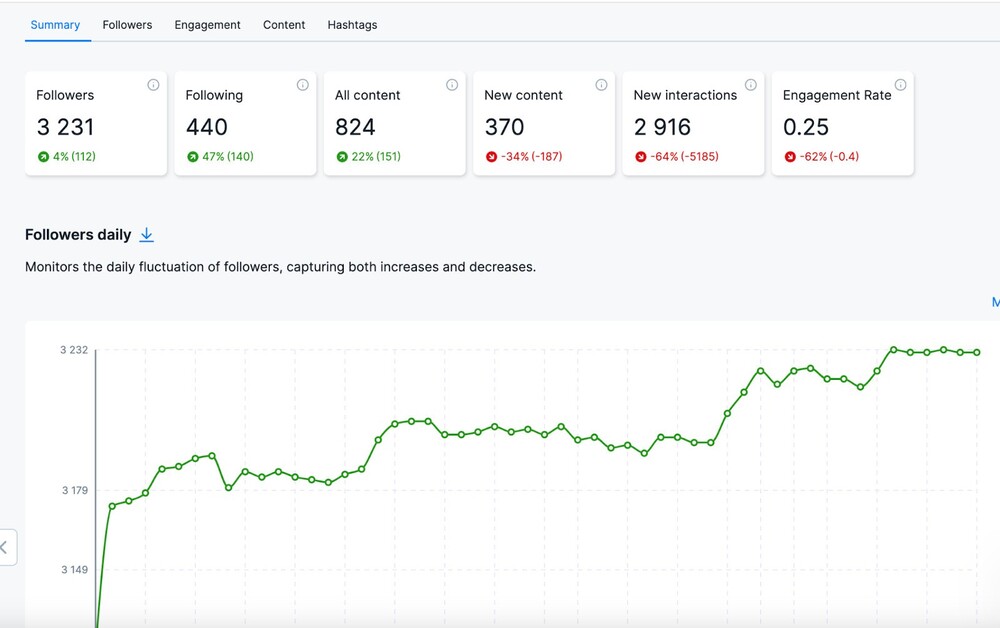
- In the Followers tab, you’ll see more details about their follower growth and how it changes daily, with follows and unfollows accounted for.
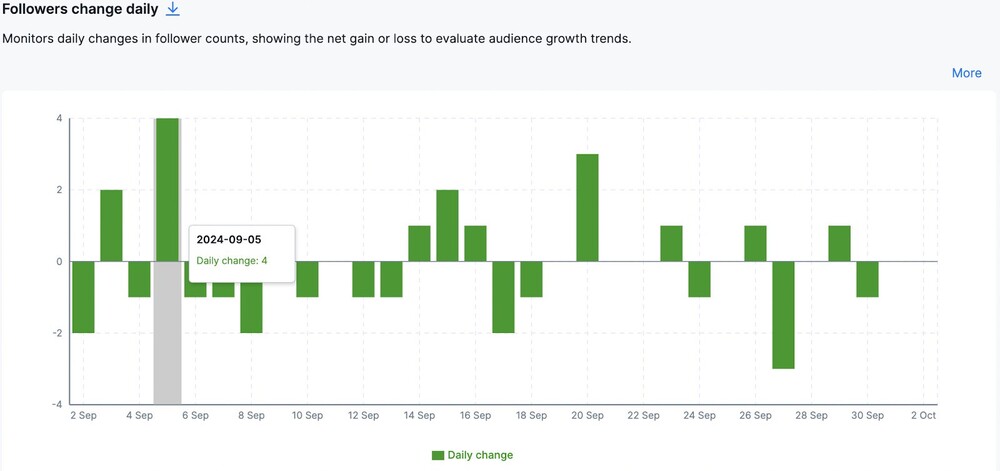
- In the Engagement section, you’ll see the number of likes and comments in a time range, the fluctuations in the engagement rate, and engagement daily and by days of the week.
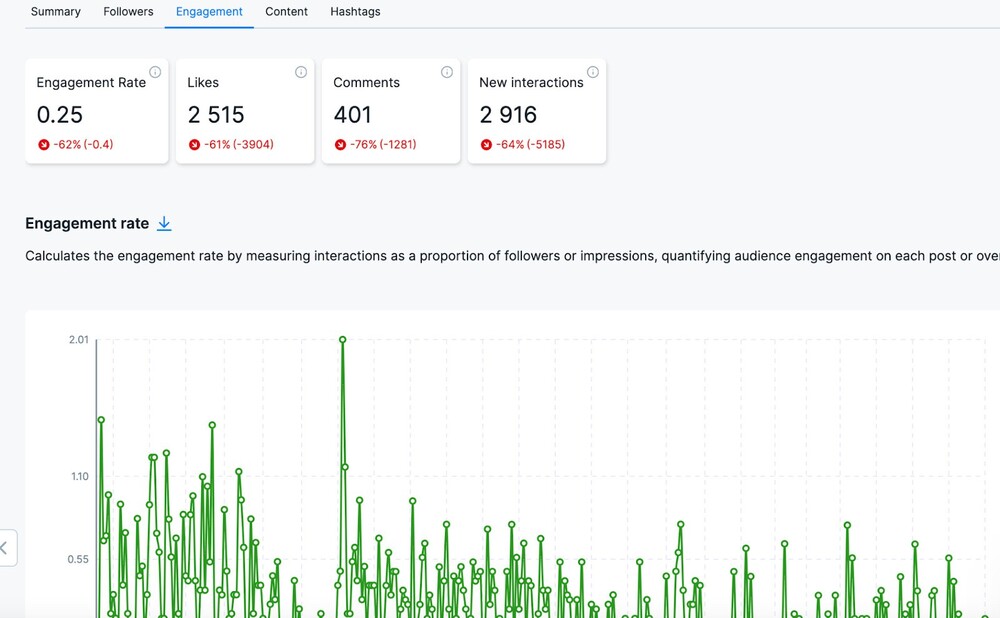
- The Content tab displays information about the posted content, including type, top content, and engagement by type and time. This one’s really helpful for letting you know about your posting schedule and content types.
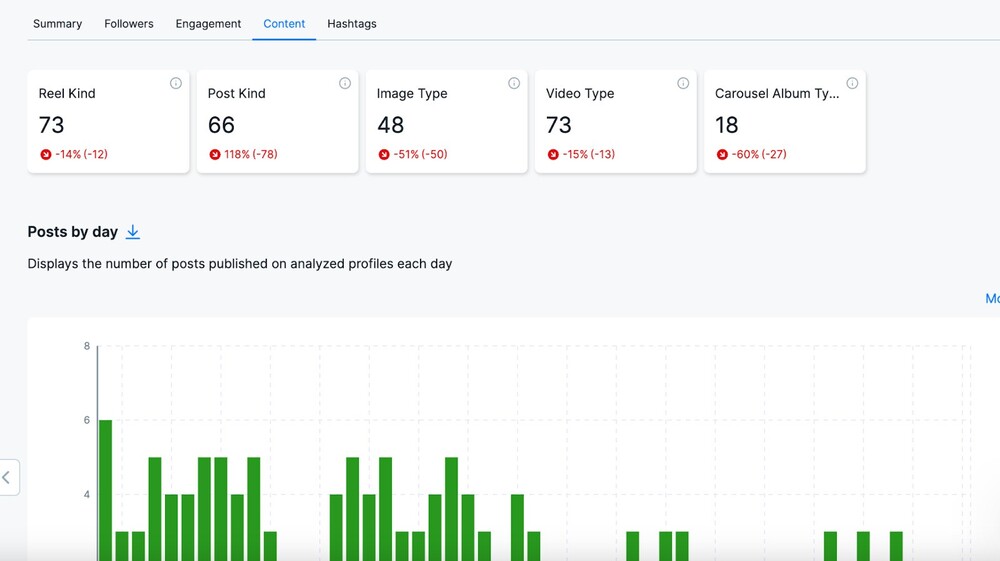
- The Hashtags tab will show you the most frequently used hashtags with their average results, making it much easier to pick effective hashtags for your content.
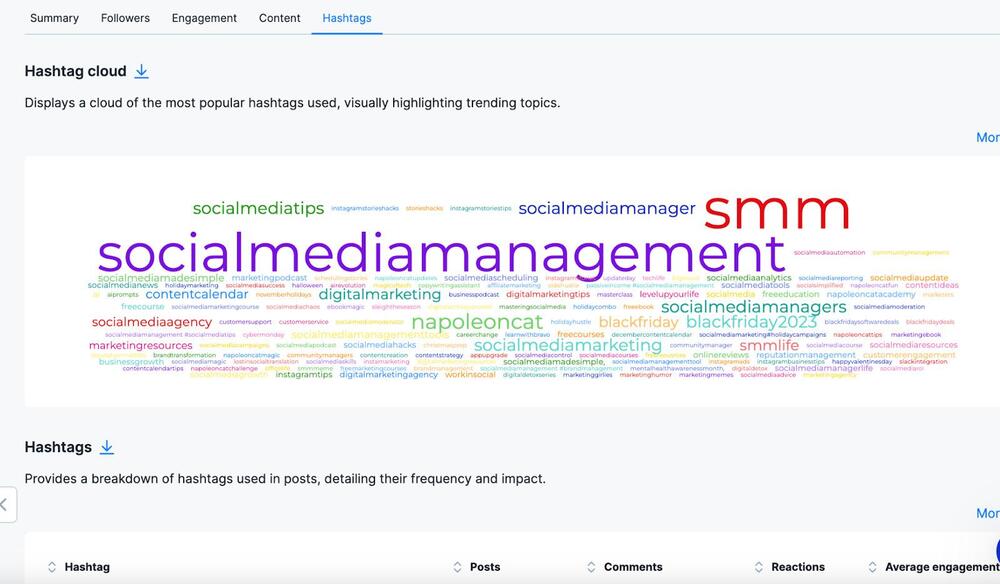
You can also group competitors together and directly compare your performance to theirs. To do that, scroll down to Benchmarking in the left-hand-side menu and create a set of Instagram profiles you want to compare. The graphs will display the results against each other, making it easier to analyze and compare.
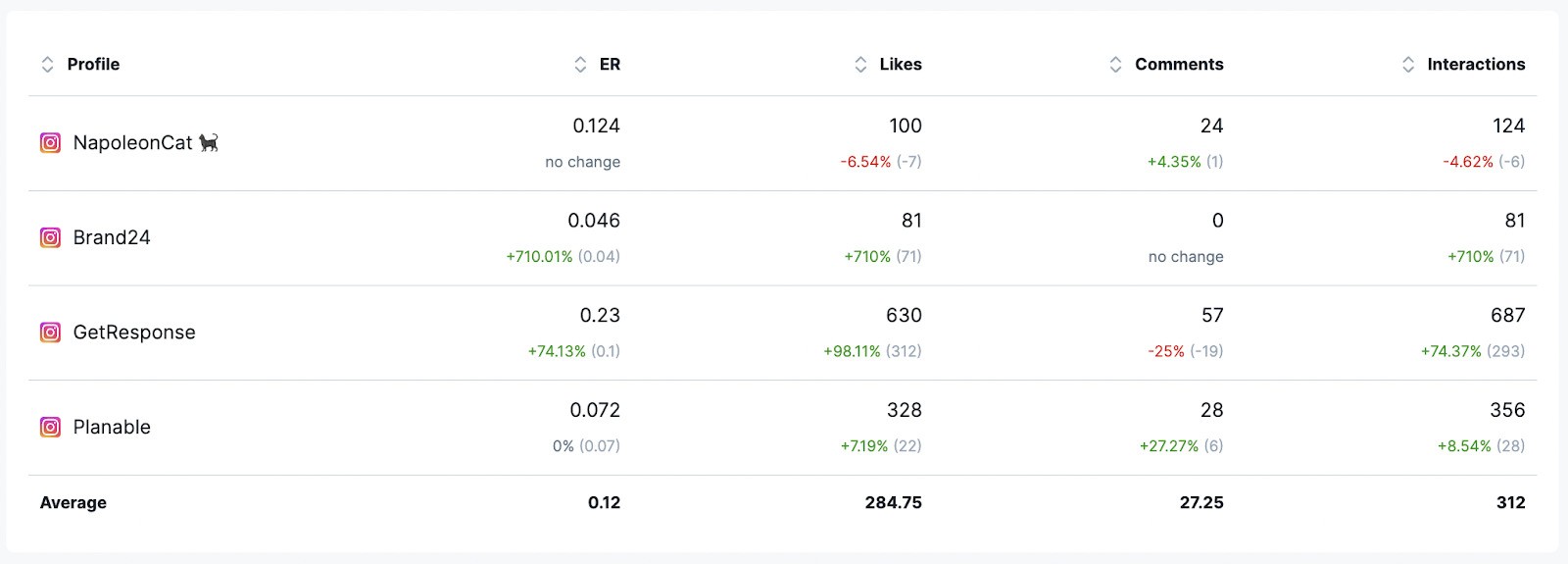
The really cool thing about NapoleonCat’s analytics is that you can download all graphs as images and create and schedule periodic PDF reports, which you can then send to other people in your company or to your client.
You can even have an automated report scheduled to go out every month or quarter that you don’t even have to touch – and it contains all the graphs and the metrics you want to include:
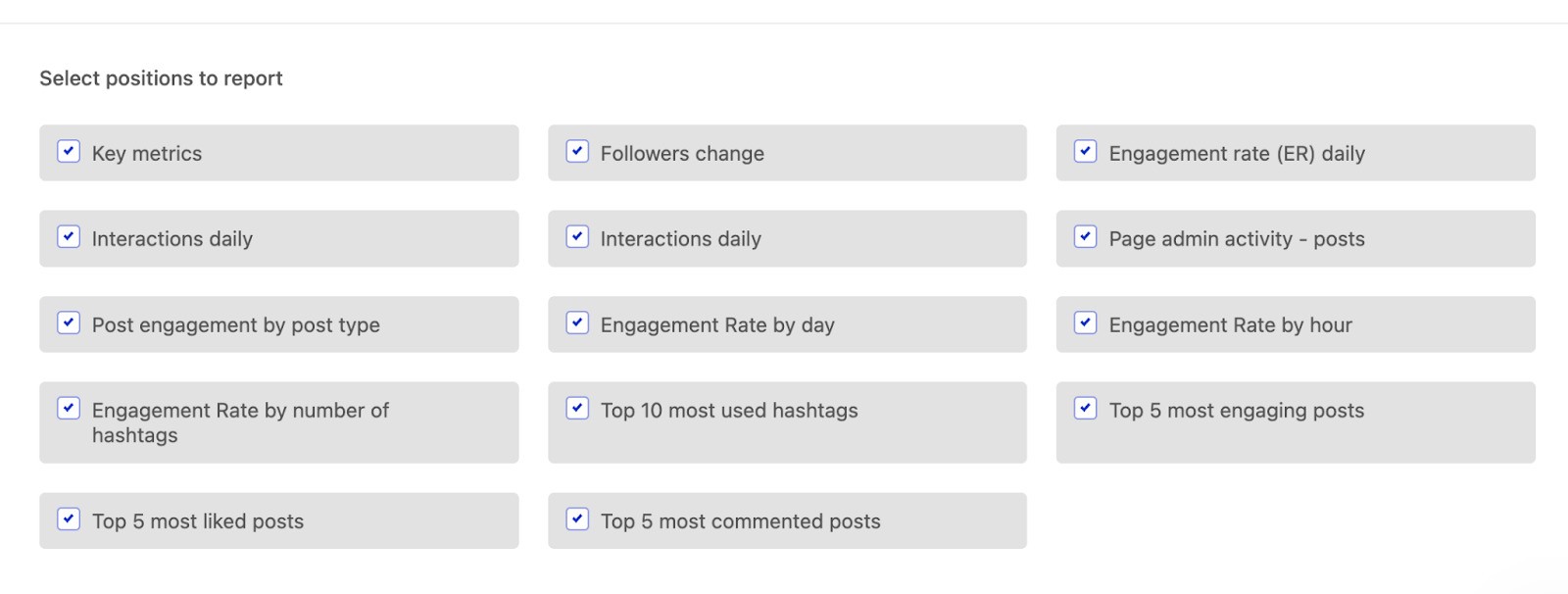
You can also take a look at this video to see NapoleonCat’s Instagram analytics in action:
You’ve got the data – now what?
Use it to:
- Monitor competitor performance against your profiles and find areas of improvement. (For best results, do it on a regular basis.)
- Report to your manager or client regularly to show progress (and earn that raise or promotion.).
- Keep researching the market to make note of any new competitors or players in your space that might affect your marketing strategies.
- Monitor new Instagram trends and see how your competitors use them – and what results they get.
And to all social media marketers out there – DON’T copy your competitors’ posts. Instead, figure out how you can outperform them with original content based on what you see them do. And keep getting better at it.
Conducting such analysis requires a lot of time and effort, but thankfully there are powerful tools that make life easier. This is your sign to to give NapoleonCat’s free 14 day trial a spin and see for yourself how it will change your social media game 😉
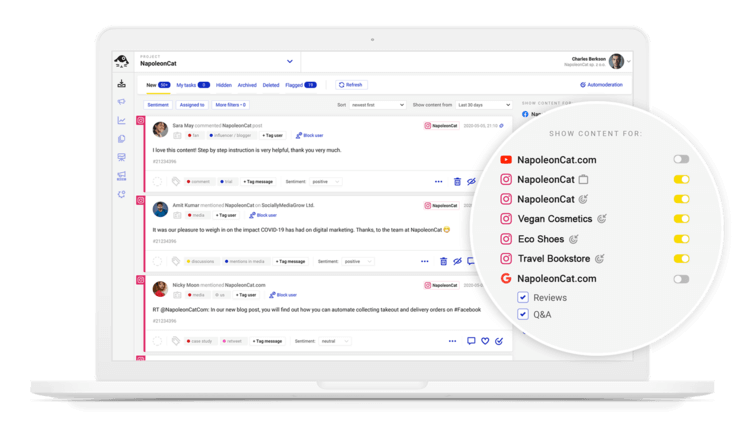
Simplify Instagram Business
Management with One Tool
- Manage & reply to comments and DMs in one place.
- Monitor ad comments from multiple accounts.
- Automate answers to repetitive questions.
- Schedule posts to multiple accounts, on desktop.
- Analyze performance and monitor hashtags.
- Keep track of your competition.
- Create or schedule in-depth reports in seconds.
Instagram competitor analysis – FAQs
How to find competitors on Instagram?
In order to find competitors on Instagram you need to identify who your competition is. There are three types of competition:
- Direct – competitors who sell the same goods and services as your business
- Indirect – companies offering alternative goods, services, or items that serve as potential replacements for yours
- Potential new entrants – competitors who might enter the market in the future
You can spot most of your competitors by frequently checking Instagram’s follow suggestions.
How do you find competitors’ engagement rate on Instagram?
You can use NapoleonCat to quickly find your competitors’ engagement rate on Instagram. You can use in-app analytics dashboards or create convenient PDF reports, too.
These features enable you to quickly notice which of your competitors’ posts have the highest engagement rate, alongside other metrics.
Should I follow competitors on Instagram?
You should definitely follow your competitors on Instagram because it can be beneficial for the future of your business in many ways:
- It allows you to stay updated on their activities, strategies, and content.
- Engaging with competitors can open doors for networking within your industry. This can lead to collaborations, partnerships, or shared opportunities that benefit both parties.
- Analyzing your competitors’ engagement, content quality, and audience interactions can provide valuable benchmarks for your own Instagram presence.
How to calculate the Instagram engagement rate in 2025?
You can calculate Instagram engagement rate in 2025 with the formula below:
Instagram Engagement Rate = (Likes + Comments + Saves) / Reach x 100
For more Instagram tips, check out our other articles:
- How to See Instagram Likes
- How to Track Instagram Follower Growth Over Time
- Understand Instagram Analytics
- A Complete Guide to Instagram Follower Demographics
- 27 Instagram Hacks You Need to Try
- 300+ Best Instagram Captions
- Auto-Comments on Instagram: When and How Should You Use Them?
- How I Used Hashtags to Grow my Instagram Organic Reach 20x
- How to Get More Comments on Instagram
- Social Media Competitor Analysis
You may also like:
- Top 10 Social Media Analytics Tools for Teams
- How to Track Competitors on Facebook
- Meet The Best Social Media Benchmarking Tool
- What Is a Social Media SWOT Analysis?
- Social Media Audit: Step-By-Step Guide
- Find Your Best Times to Post on Social Media


